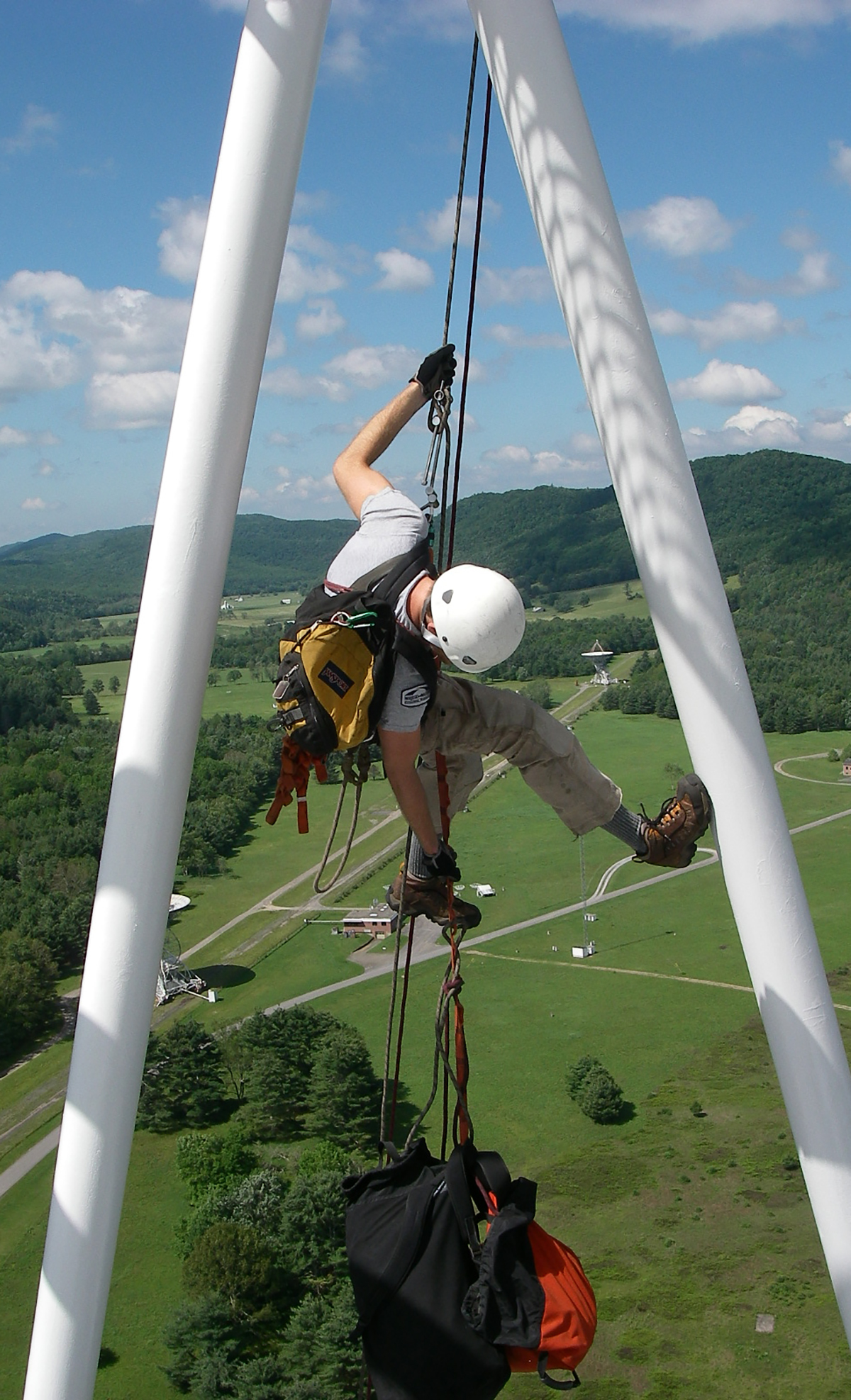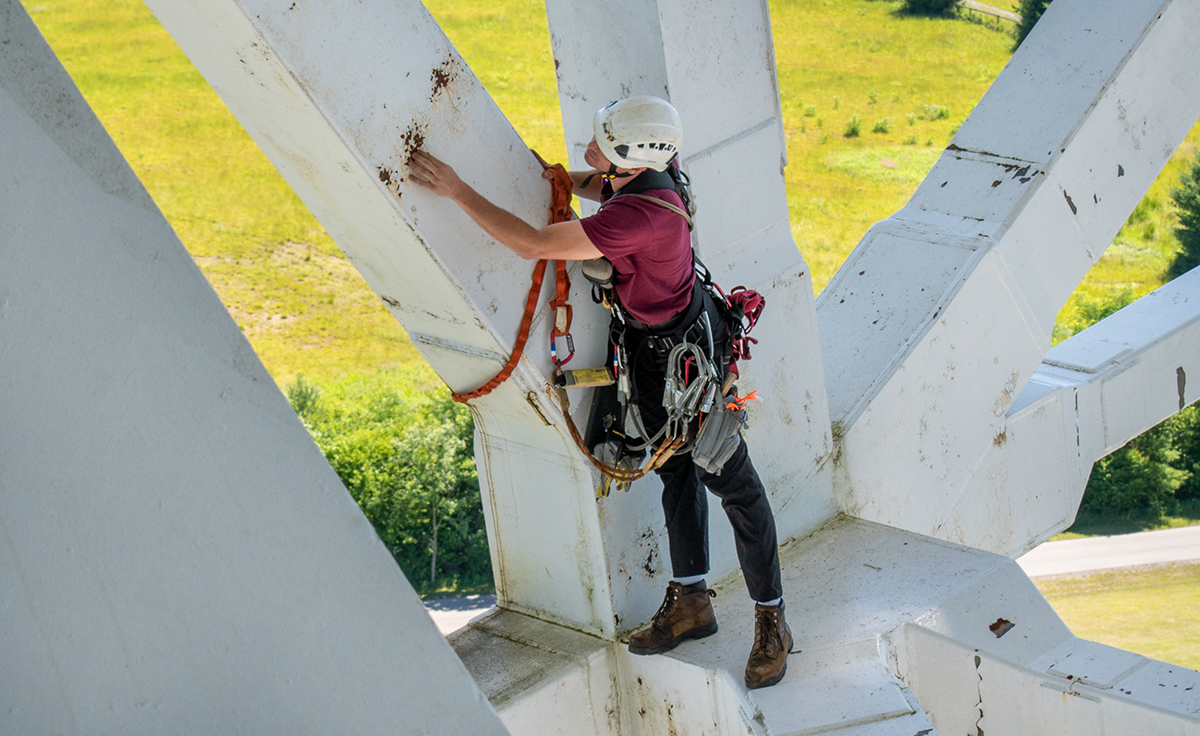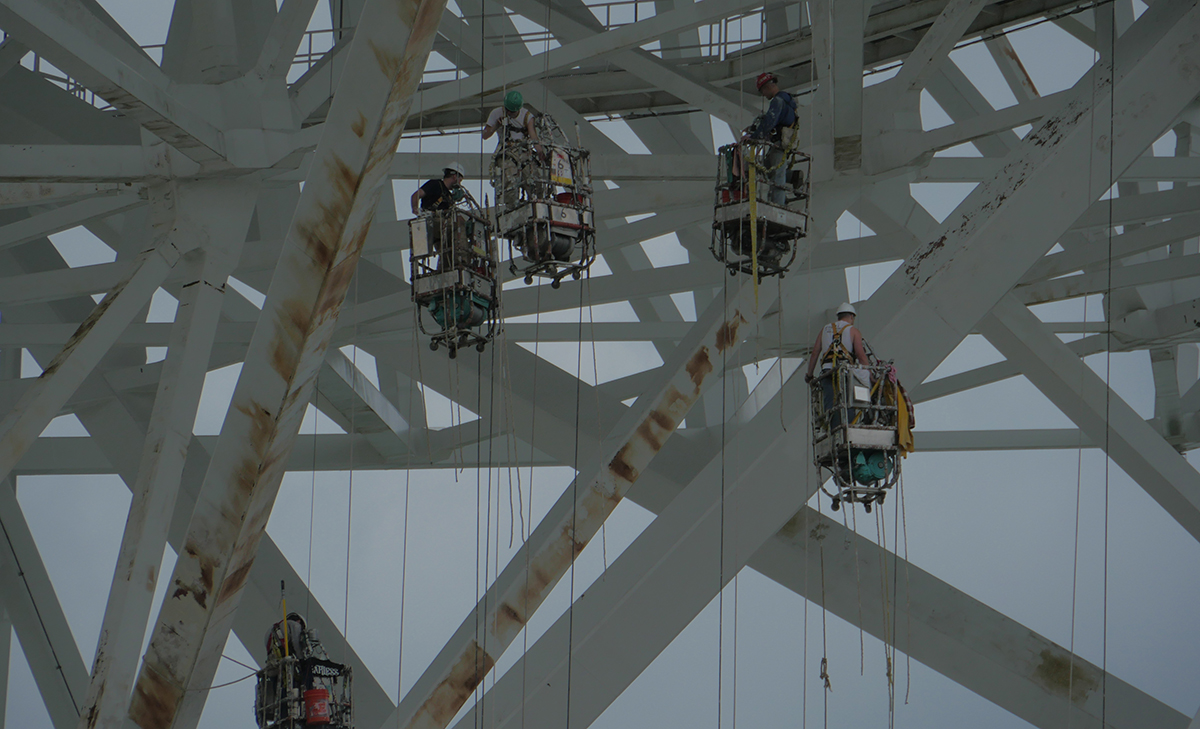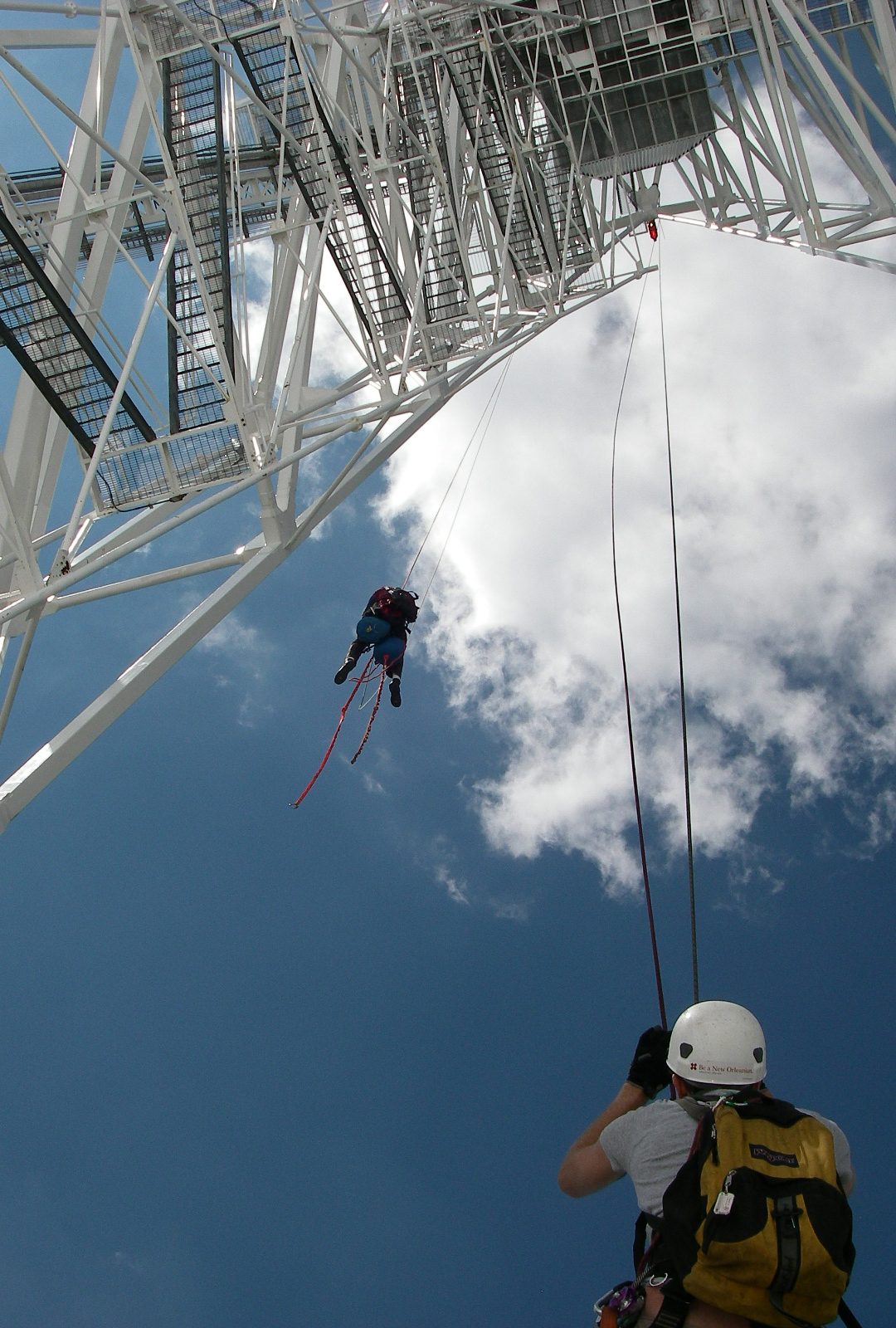 Courtesy of Modjeski and Masters
Courtesy of Modjeski and Masters
 Courtesy of Modjeski and Masters
Courtesy of Modjeski and MastersHigh in the West Virginia mountains, nestled within the National Radio Quiet Zone, stands one of the world’s most remarkable scientific instruments: the Robert C. Byrd Green Bank Telescope.
Operated by the U.S. National Science Foundation Green Bank Observatory, the NSF Green Bank Telescope is the world’s largest fully steerable radio telescope and a vital tool for advancing our understanding of the universe. By capturing faint radio waves from distant galaxies, stars, and cosmic phenomena, the Green Bank Telescope helps scientists map asteroids, study black holes, detect gravitational waves, and explore the building blocks of the universe.
To ensure the structural integrity of this one-of-a-kind telescope, the Green Bank Observatory has relied on Modjeski and Masters for more than two decades. As one of the nation’s leading bridge and infrastructure engineering firms, M&M has brought its structural inspection, coatings, and rope access expertise to this 17 million-pound structure since its construction was completed in 2000.
In 2021, a comprehensive structural inspection by M&M identified a critical need: The telescope’s aging coating system had reached the end of its life, causing corrosion on critical structural members. M&M recommended fully recoating the structure, including the high-priority feed arm, to preserve the telescope for future generations of scientists.
Further reading:
- Giant Magellan Telescope is an engineering marvel – as is its building
- San Jose’s Lick Observatory took telescopes to new heights
- Underground telescope will help scientists detect gravitational waves
That recommendation kicked off a multiyear repainting project – one that began its first phase in June of this year and marks an important new chapter in the telescope’s legacy.
Inspecting to prevent a repeat collapse
The importance of inspecting the Green Bank Telescope cannot be overstated. In 1988, its slightly smaller predecessor collapsed due to the sudden failure of a key gusset plate. The collapse – attributed to deferred inspection and maintenance – was a wake-up call for the scientific community, underscoring the need for rigorous, ongoing structural monitoring.
The new telescope was constructed from 1991 to 2002, and the NSF National Radio Astronomy Observatory brought in M&M to develop a full inspection plan and procedures. As Peter Keating, Ph.D., P.E., a designer of the new telescope and former M&M engineer, understood, regular structural evaluations were critical to preventing another catastrophic failure.
 Courtesy of Modjeski and Masters
Courtesy of Modjeski and MastersStarting in 2003, M&M performed extensive hands-on inspections every three years, each lasting up to nine weeks and involving highly trained structural engineers and technicians. With each inspection, the team cataloged conditions in a detailed database, examining joints, caulking, coatings, and welds, using a four-point criticality rating system. That data enabled Green Bank Observatory maintenance crews to prioritize repairs before small issues become big ones.
Why repainting matters
In 2021, as part of a scheduled inspection, M&M’s in-house National Association of Corrosion Engineers’ level 3 coatings expert conducted a special evaluation of the existing coating system. Although previous spot-painting efforts had prolonged the life of the coating system, M&M uncovered widespread deterioration and corrosion that signaled it was time for full removal and recoating. According to M&M’s coatings evaluation, the existing coating system had reached the end of its service life.
Replacement was necessary to prevent long-term damage to the structure’s thin-walled steel members – particularly in high-priority areas like the feed arm.
 Courtesy of Modjeski and Masters
Courtesy of Modjeski and MastersThe firm recommended a complete removal of the existing coating system, followed by the application of a three-coat moisture-cured zinc, epoxy, and urethane coating system designed for long-term durability. The recoating process began this year and is expected to take 3-5 summer maintenance seasons to complete, starting with the critical feed arm – the vertical structure that houses the receivers and subreflector above the 100-meter dish.
Liberty Maintenance Inc. of Youngstown, Ohio, was awarded the contract, with an initial commitment of approximately $4.5 million for the first phase.
The rope access advantage
Accessing the Green Bank Telescope for inspection is no simple feat. While a 158-foot aerial work platform can reach certain areas when the dish is tilted, the vast majority of the structure must be accessed by ropes. That’s where M&M’s specialized rope access program shines. A recognized leader in this space, M&M formalized its technical rope access program in 2000 – long before it became an industry norm.
Without rope access, safely inspecting the structure would have been nearly impossible. M&M developed creative methods – from long angled rappels to beam clamp systems – to navigate a telescope with virtually no truly vertical drops, relying on its formalized rope access program and highly trained climber-engineers.
The Green Bank Telescope, with its trusses, unusual angles, and more than 1,300 individual steel elements, required rope solutions specifically tailored to its geometry and science mission. M&M’s climber-engineers designed roller clamps to move along structural members, coordinated safe movement while the telescope was repositioned, and rehearsed complex rescue protocols – all while staying within the federal limitations of the National Radio Quiet Zone.
Even getting into position can take 30 minutes, involving elevator rides, ladder climbs, and gear setup. Once in place, engineers inspect members for corrosion, cracks, misalignments, or weld issues. All findings are logged in a centralized system that guides future maintenance decisions by the Green Bank Observatory.
 Image courtesy of Modjeski and Masters
Image courtesy of Modjeski and MastersLooking ahead
M&M’s role didn’t end with the 2021 inspection. As the coatings project unfolds, the firm is serving as the quality assurance inspector under a separate contract. M&M experts are verifying surface prep, inspecting each layer of the coating for uniformity and thickness, and making sure the contractor follows the rigorous technical specifications before progressing to the next stage.
Inspections like these may not always make headlines, but they are essential to preserving the infrastructure behind our most ambitious scientific discoveries. The work at Green Bank is a reminder that thoughtful engineering and ongoing maintenance make exploration possible, ensuring the Green Bank Telescope remains a vital tool for discovery for years to come.



